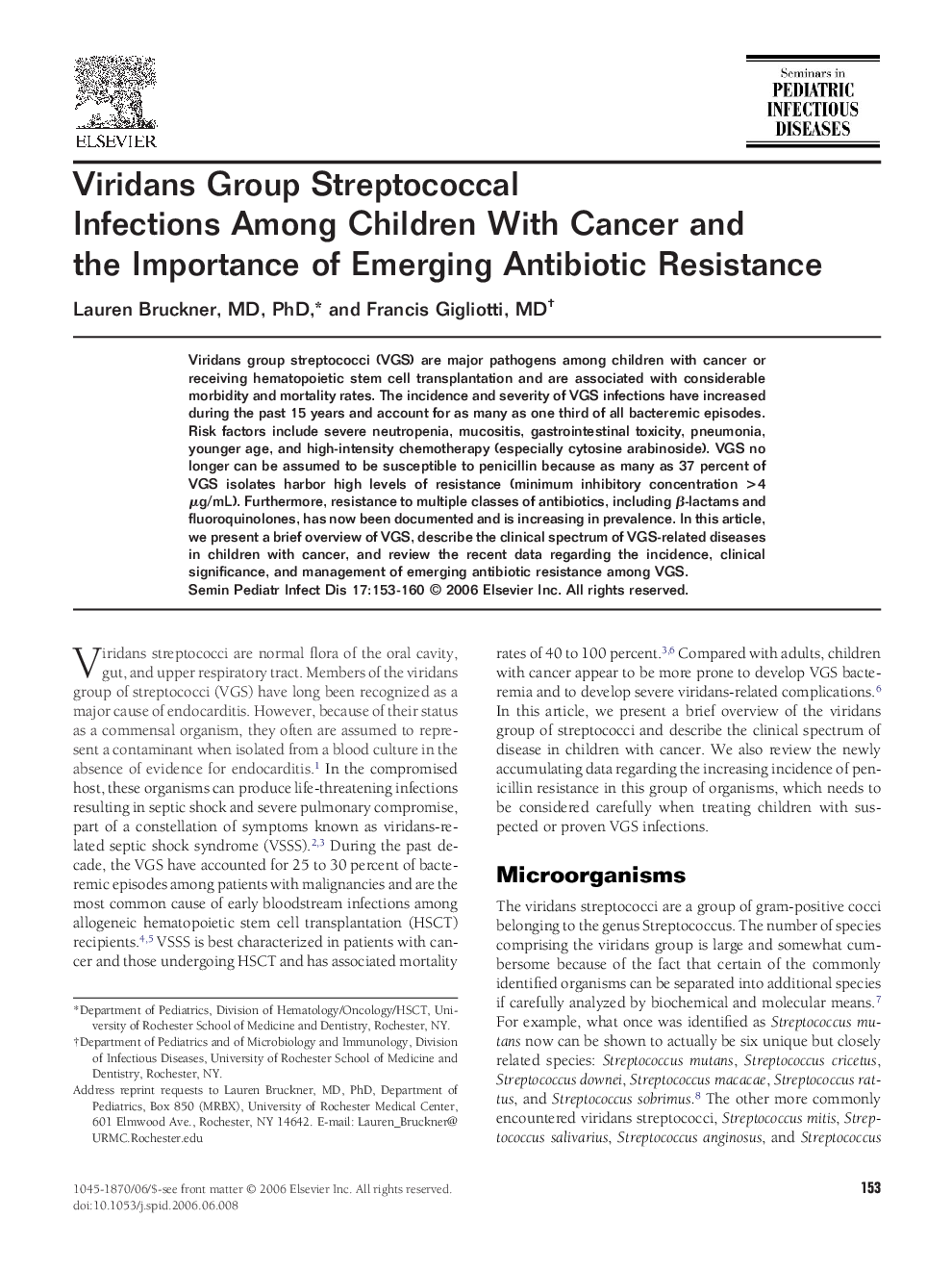| Article ID | Journal | Published Year | Pages | File Type |
|---|---|---|---|---|
| 4176315 | Seminars in Pediatric Infectious Diseases | 2006 | 8 Pages |
Viridans group streptococci (VGS) are major pathogens among children with cancer or receiving hematopoietic stem cell transplantation and are associated with considerable morbidity and mortality rates. The incidence and severity of VGS infections have increased during the past 15 years and account for as many as one third of all bacteremic episodes. Risk factors include severe neutropenia, mucositis, gastrointestinal toxicity, pneumonia, younger age, and high-intensity chemotherapy (especially cytosine arabinoside). VGS no longer can be assumed to be susceptible to penicillin because as many as 37 percent of VGS isolates harbor high levels of resistance (minimum inhibitory concentration >4 μg/mL). Furthermore, resistance to multiple classes of antibiotics, including β-lactams and fluoroquinolones, has now been documented and is increasing in prevalence. In this article, we present a brief overview of VGS, describe the clinical spectrum of VGS-related diseases in children with cancer, and review the recent data regarding the incidence, clinical significance, and management of emerging antibiotic resistance among VGS.
